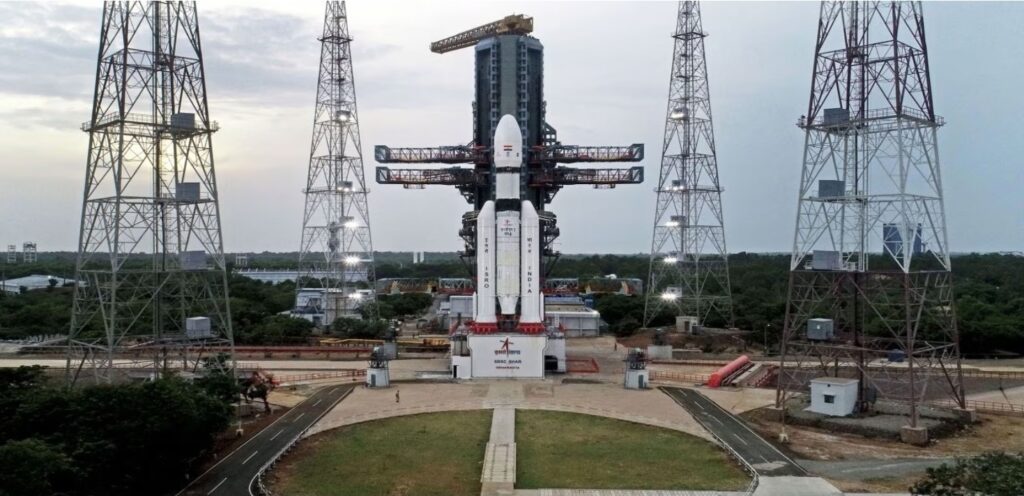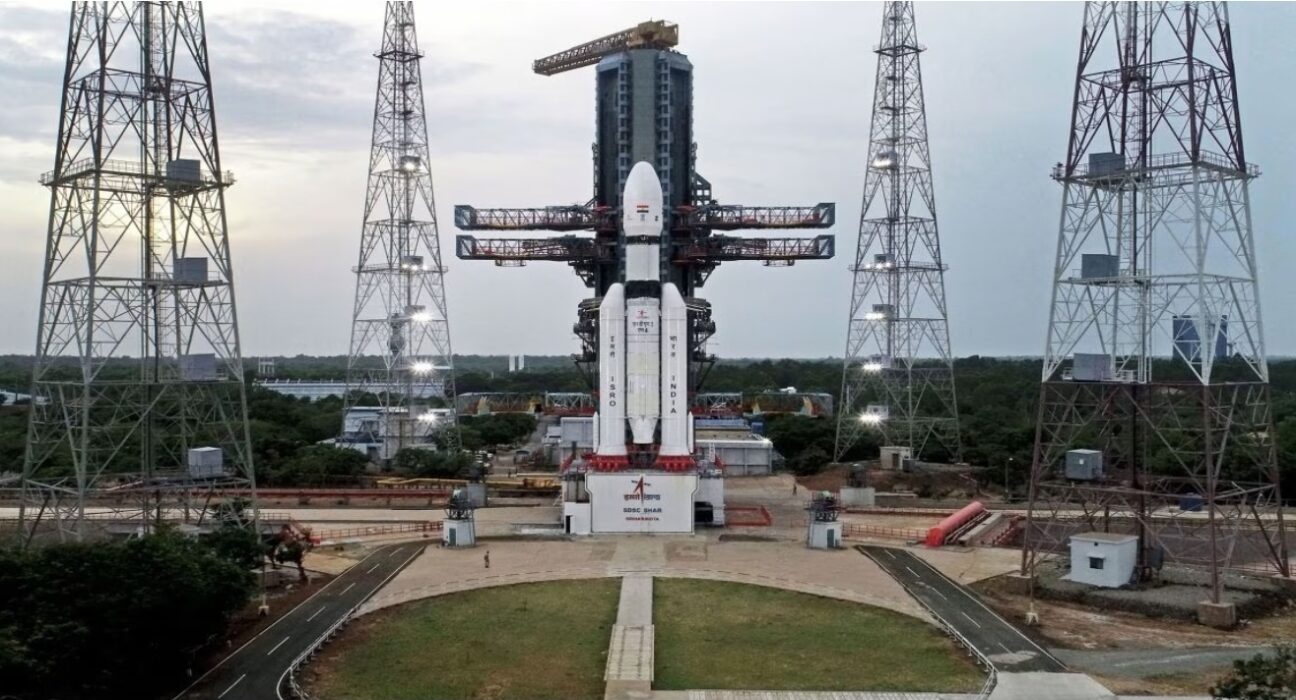
India is getting ready for its Chandrayaan-3 mission. The goal of this mission is to make India the fourth country to put a spacecraft on the moon in a controlled way. The launch will happen from the Satish Dhawan Space Centre in the state of Andhra Pradesh.
After the failed Chandrayaan-2 journey in 2019, this will be India’s second try at a soft landing. The Indian Space Research Organisation (ISRO) made Chandrayaan-3. It has a lander, a module for moving forward, and a robot. Its goal is to land safely on the moon’s surface, collect information, and do scientific tests to learn more about how the moon is made.
So far, only the United States, Russia, and China have been able to land softly on the moon. Indian engineers have been working hard on this project for years. Their goal is to put Chandrayaan-3 on the difficult terrain of the South Pole of the Moon, which hasn’t been explored yet. India’s Chandrayaan-1 and Chandrayaan-2 missions to the moon have already made important advances to the study of the moon. Chandrayaan-1 was sent into orbit around the moon in 2008. It found water molecules on the moon’s surface. Chandrayaan-2 was sent into lunar orbit after it was launched in 2019, but a robot crashed when it tried to land.
Even after the failure, Narendra Modi, who is the prime minister of India, has supported the country’s space programme and its goals. About $75 million have been spent by India on the Chandrayaan-3 project. India’s space programme has a long and interesting past. It began more than 60 years ago, when the country had just become independent and was having trouble with its economy. India sent its first rocket into space in 1963, but it was behind the US and the Soviet Union in the race to be the first to land on the moon.
India’s space programme, on the other hand, has been moving forward quickly under Prime Minister Modi. With its Mangalyaan probe, India became the first Asian country to reach Mars in 2014. It did this at a much lower cost than the movie “Gravity.” India broke a record in 2017 when it launched 104 satellites all at once. In 2019, India did a successful anti-satellite test, making it one of the few countries that can do this. ISRO also wants to build its own space station by 2030, and it has also proposed sending a rover to Venus.
Investors are interested in India’s progress in space technology, which makes it one of the most potential industries in the country. World leaders, like Vice President of the United States Joe Biden, want to work with India on the space economy. During Modi’s recent trip to the United States, the two leaders talked about ways to work together more on space-related projects.India’s plans for space show that it is becoming more important on the world stage and is ready to accept new ideas and technologies. India is likely to play a big part in the future of space exploration because of its growing population and strong economy. As India gets ready for the Chandrayaan-3 journey, its space programme continues to draw attention from around the world and inspire dreams that go beyond the moon and Mars, with plans to explore Venus and build its own space station.






